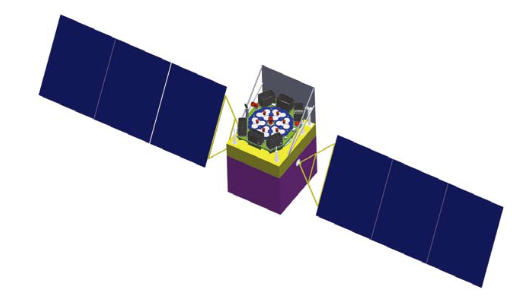
The figure shows the illustration of the HXMT satellite. The payloads are on the top of the satellite, and there installs a sunshading board in one side so that the payloads will not be exposed directly in the sunlight, which will keep the detectors to work at low temperature. The satellite is three-axis stabilized, with an attitude control precision of 0.1°and measurement accuracy of 0.01°. Considering the locations of the remote control stations, and to avoid the high particle background environment such as the SAA region, the radiation belt, and the polar region, the orbit of the satellite has an altitude of 550km and an inclination angle of 43°.
The Hard X-ray Modulation Telescope (HXMT) is the first astronomical satellite of China. On board HXMT there are there kinds of telescopes, the High Energy Telescope (HE, 20-250keV), the Medium Energy Telescope (ME, 5-30keV) and the Low Energy Telescope (LE, 1-15keV). HXMT will perform an X-ray sky survey and do pointed observations of X-ray sources. Its main scientific goals are: (1) to scan the Galactic Plane to find new transient sources and to monitor the known variable sources, (2) to observe X-ray binaries to study the dynamics and emission mechanism in strong gravitational and magnetic fields and (3) to find and study Gamma Ray Bursts (GRB). The launch day is in 2017 and the designed lifespan is four years.ß
